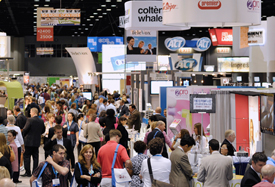On a weekly basis, I seem to always have at least one conversation with one of my patients in regards to white fillings. Just recently in July, I had someone ask me why their old white fillings done by their prior dentist were failing. Meanwhile some of their old silver fillings that were done during their childhood were still going strong. In order to address the questions that many people may have in regards to white fillings, I have decided to compose a brief explanation:
White fillings in general have a life expectancy of 2 to 25 years, while silver fillings will usually last anywhere from 15 to 30 years. The reason there is such a wide discrepancy between white fillings is because these fillings are very technique sensitive. In addition there are also many types of white filling materials and bonding agents that may be used by the dentist. Silver fillings on the other hand, are far less technique sensitive and there is basically only one type of silver filling material.
When determining the life expectancy of white fillings, the hand skill and technique level of a dentist are typically an unknown and always a changing variable. The patient has no real control over the proficiency of the dentist at the time of service. However the type of white filling and bonding agent is a constant and more controllable variable because of the vigorous lab and in-vitro testing done in order to get these dental materials on the market.
The longevity and strength of a white filling material is determined by numerous factors. However in order to simplify, I have listed two very important attributes: Polymerization shrinkage and Compressive Strength. Please keep in mind that each white filling material will measure up differently for each category. Better numbers in shrinkage rate will not always result in better numbers in compressive strength and vice versa. It is up to the dentist to determine the best material with the attributes that will provide the best results for each individual case.
The polymerization shrinkage rate is measured by a percentage. The lower the shrinkage rate, the lower the chance of a cavity developing under the white filling. Basically a lower shrinkage rate translates into a longer lasting white filling. The shrinkage percentage can range from as low as 1.4 percent to as high as 5 percent. Again the lower the percentage the better the material.
The compressive strength measures the ability of the white filling to withstand the forces of mastication and grinding. The higher the compressive strength, the less likely the white filling will be crushed when chewing and grinding with the teeth. This attribute is measured in MPa and can range from 100 to 500 MPa. The higher the number, the better the material.
Now the type of bonding agent will determine how well the white filling bonds to a tooth. The stronger the bond, the longer the white filling will last. This bond strength is also measured in MPa. The bonding strength to enamel can range from 10 to 38 MPa. While the bonding strength to dentin (the inside portion of a tooth) can range from 5 to 44 Mpa. Again the higher the MPa, the better the bonding agent. However, just because a bonding agent has a stronger enamel bond, may not mean it will have a strong dentin bond and vice versa – it is up to the dentist to determine which agent will work best in each case.
There are over a hundred different kinds of composite material and over fifty different kinds of bonding agents. Typically the better the material, the higher the cost. In addition every few years new materials and bonding agents are introduced – so a dentist must keep up to date, if they wish to provide the best level of care.
That being said, I typically will explain to patients that we use the best bonding agents and white filling materials on the market and we will constantly change these out for better products regardless of the cost on a regular basis. We also use a variety of different bonding agents and filling materials depending on the type of cavity or tooth we are working with. We always try and choose the best material for each case. I spend hundreds of hours every year doing research on all our dental materials. Most dentists have no clue as to how their material rates up against others. There are some dentists who will only use the dental material that gets them the best bang for their buck or the material that they had used long ago in dental school – this in essence will lead to more failed white fillings.
As of today, the white filling material that we use at our dental office has a polymerization shrinkage rate of 1.48 % and a compressive strength of 500 MPa. Our bonding agent has an enamel bonding strength of 35 MPa and a dentin bonding strength of 44 MPa.


